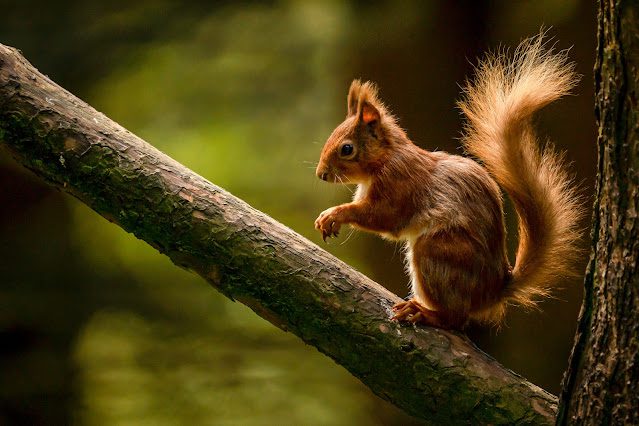
23 March 2023
in Nature
Red Squirrels – where have they all gone?

Red Squirrels – where have they all gone?
Red Squirrel (Sciurus Vulagris) Great Britain population 140,000
Length 21cm (adult) Weight 330g (adult) Lifespan 3-4 years
The idea of photographing red squirrels is like Marmite, some photographers love it (like me) and some just aren’t fussed or bothered about finding them and taking photos. I remember first seeing them when I was a kid in the 80s but never really gave them a second thought until I got into my wildlife photography. I then started to study and read about not only where they live, but why their numbers have declined so much and why we don’t see them in every woodland in the country anymore.
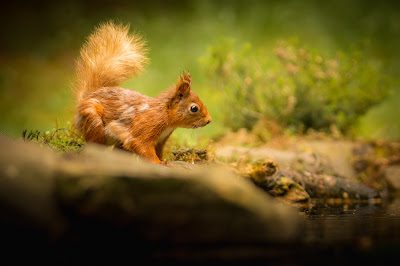
A young red squirrel in Aviemore, Scotland
The red squirrel has been the native species in Great Britain for about 10,000 years. In the late 1800s the Victorians decided to bring the Grey Squirrel over from North America and it’s introduction to the ecosystem in Britain is largely down to one man, English nobleman Herbrand Russell. He was a Duke that collected rare animals at Woburn park in Bedfordshire. He was involved in many successful animal conservation projects, but would release and gift grey squirrels to people. He released populations into Regents Park, London creating an epidemic of grey squirrels.
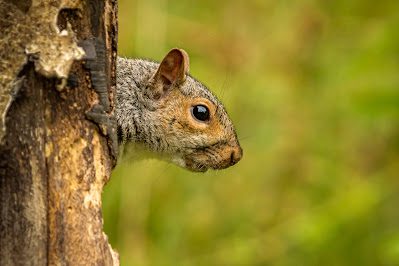
The invasive species of Grey Squirrel
The population of red squirrels started to decline in the 1920s. There are now more than 2.5 million grey squirrels in the UK, 2 million of them in England. There’s thought to be only 140,000 red squirrels remaining, 120,000 of them in Scotland, making them an endangered species. The survival of these strongholds relies on active management by organisations, volunteers, land owners and even us as photographers to report grey squirrels in areas known to have the reds. Some red populations have natural barriers of the sea- like Brownsea island or the Isle of Wight.
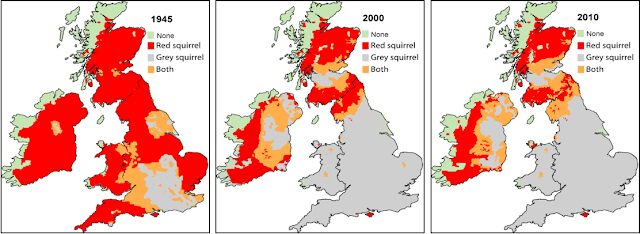
This map by Craig Shuttleworth & The Red Squirrel Survival trust show the extent of the Grey Squirrels and the delicate of the Reds.
The grey squirrels not only out compete the reds for food and habitat but they also carry and transmit squirrel pox virus. The competition stresses and weakens the red squirrels, which reduces their ability to fight off disease and reproduce. Once grey squirrels move into an area, it’s literally a matter of time before the reds will die in that area. It’s thought that grey squirrels are carriers of the disease and are less likely to die from it than the reds.
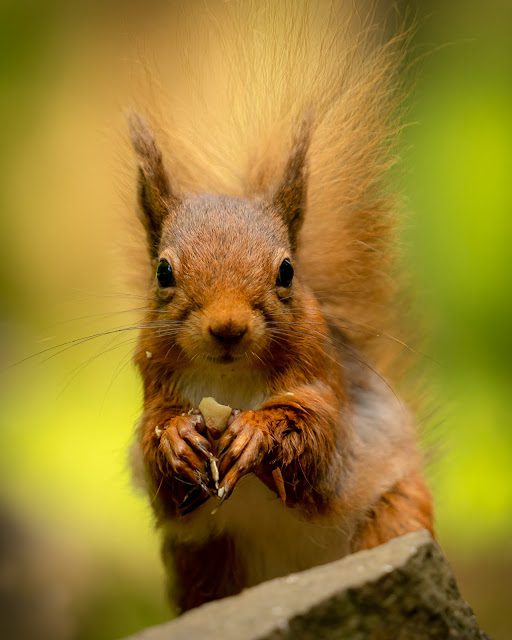
A red squirrel on the Isle of Wight enjoying an acorn.
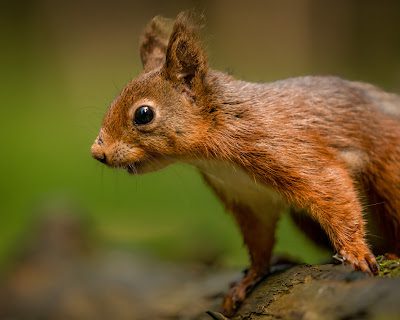
Red Squirrel in his summer coat, Scotland.
The red squirrels can suffer from tannin poisoning too, tannin is found in unripened acorns, but the grey squirrels seem to have a greater tolerance, which means they can eat all the acorns easier and earlier in the year than the reds, which has pushed red squirrels into areas where they can eat seeds from conifer trees that the greys find more difficult to extract.
It’s because of this struggle and the conservation needed that attracts me to photographing them even more. Maybe if I lived in Scotland or on the Isle of Wight and saw them every day the magic would wear off. It’s a bit like dreaming of living in the Alps, if you actually lived there how long would it be before you didn’t notice the mountains or spectacular views?
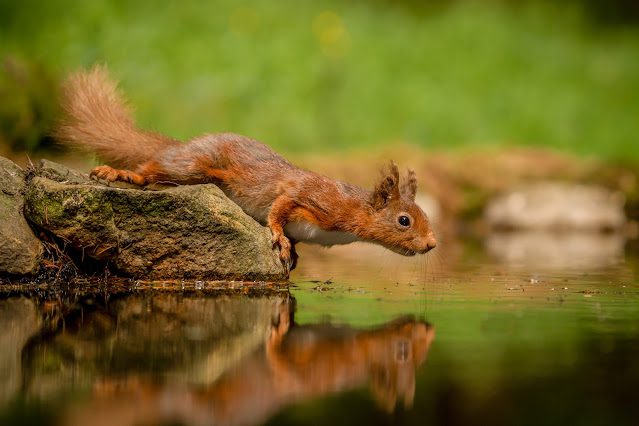
Red Squirrel in his summer coat, Scotland.
I’ve been to Brownsea island, Northumberland, the Isle of Wight, Anglesey and many places in Scotland photographing them in the wild. There’s a beautiful small conservation area for red squirrels in Ponteland, behind the agriculture college with small wooden hides and feeders in the woodlands. The Red Squirrels Northern England is a conservation project covering the North of England where you can submit sightings and donate to help with their work. In Scotland, I saw them in Aviemore whilst visiting a hide to photograph pine martens and in the woodlands near the Cairngorm mountains. It was pouring with rain like I’ve never seen in Scotland but it made some great photos and videos.
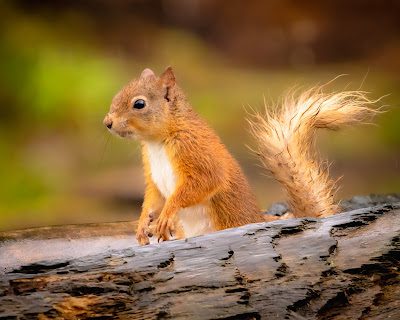
The pouring rain of Scotland doesn’t put off the reds collecting acorns
Another fantastic place to visit to photograph the red squirrels is at Paul Fowlie’s Red Squirrel Hides in Hawes, Yorkshire. It’s especially good if you don’t want to wander the woods for hours searching for them. It’s a private piece of land with woodlands and wooden hides with a reflection pool. Paul looks after the woodland and the squirrels all year and is an award winning Canon photographer himself. If the squirrels are feeling playful you can get them to jump from one wooden post to another for the reward of an acorn and get this very common shot of the squirrel jumping towards you. It can be a muddy walk down into the woods, so make sure you have some waterproof boots with a good grip.
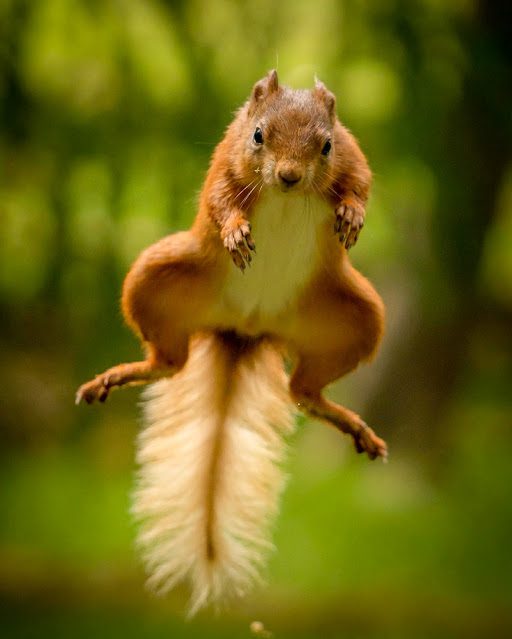
A flying red squirrel at Paul Fowlie’s Red squirrel hides, in Yorkshire.
Thanks for reading!
If you have anything to add or ask me please use the comments below!
You may also like
Where to photograph Atlantic Puffins in the UK
Where to Photograph Atlantic Puffins in the UK Atlantic puffin (Fratercula artica) GB Population 580,000 pairsLength 26-29cm Wings
18 June 2024
in Nature
Puffins of the Isle of Lunga: The Charismatic ‘Sea Parrots’
Located in the Treshnish Isles of Scotland, Lunga is a haven not only for wildlife enthusiasts but also for conservationists, who
9 August 2024
in Nature
Red Grouse on the Yorkshire Moors: Sunrise with the Scarlet Sentinels
I experienced these stunning birds on the vast, rolling expanse of the Yorkshire Moors as the first light of dawn began to paint t
Featured Posts

Photographing Gannets at Bempton Cliffs: A Graceful Return
14 October 2024
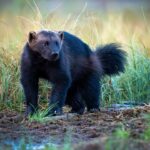
Wolverines in Finland: A Wildlife Photographer’s Dream
24 September 2024
GET SOCIAL
INSTAGRAM
@snowboard.paul
@macro.paul
TWITTER
@paul__browning_
FACEBOOK
@snowboardpaul
@macro.paul.surrey
Get in Touch
GET SOCIAL
INSTAGRAM
@snowboard.paul
@macro.paul
TWITTER
@paul__browning_
FACEBOOK
@snowboardpaul
@macro.paul.surrey
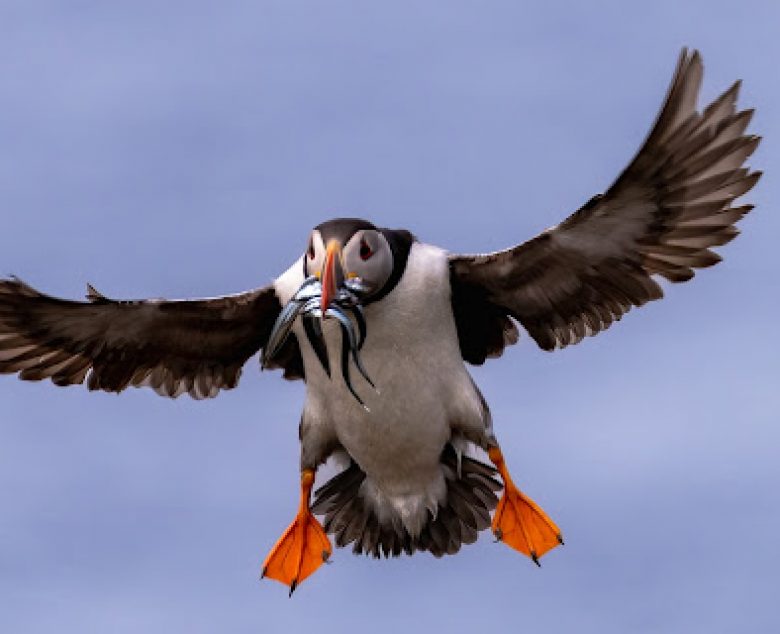
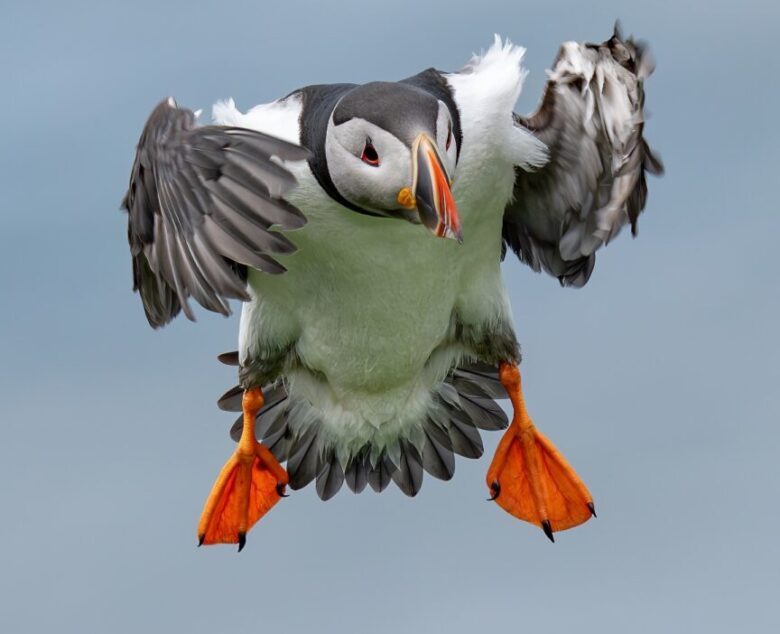
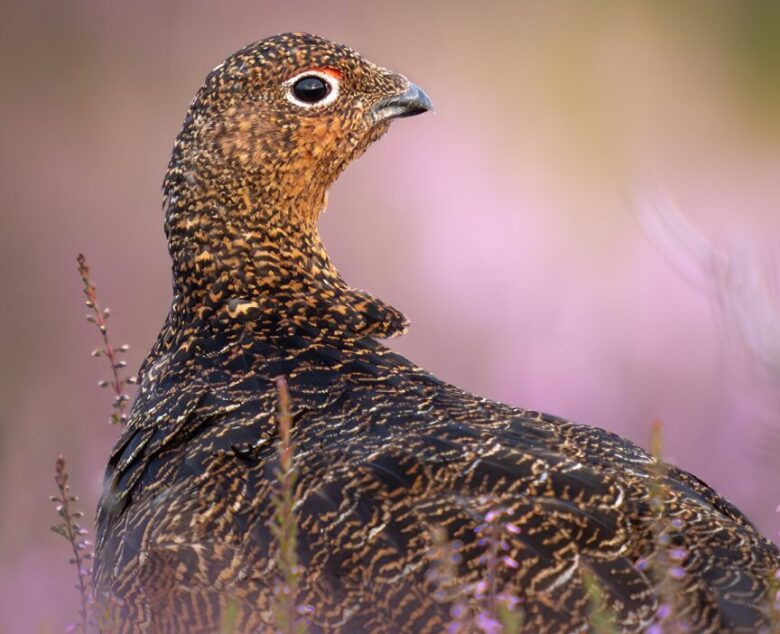
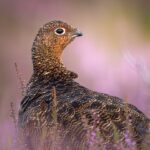


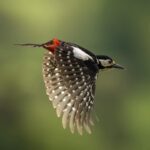

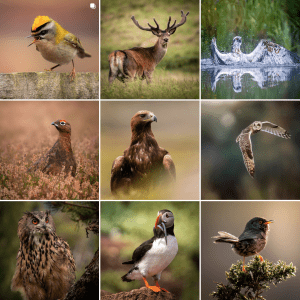
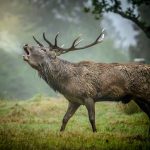


Leave a Reply